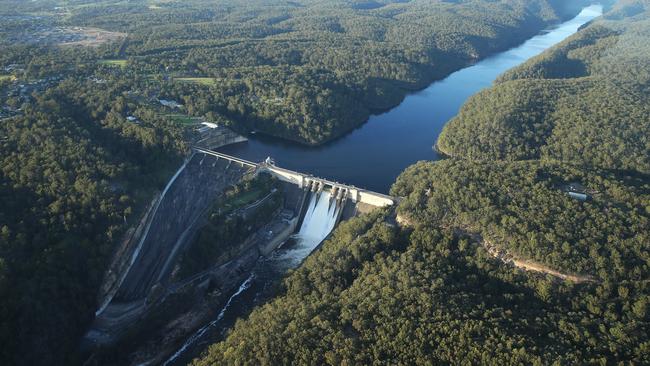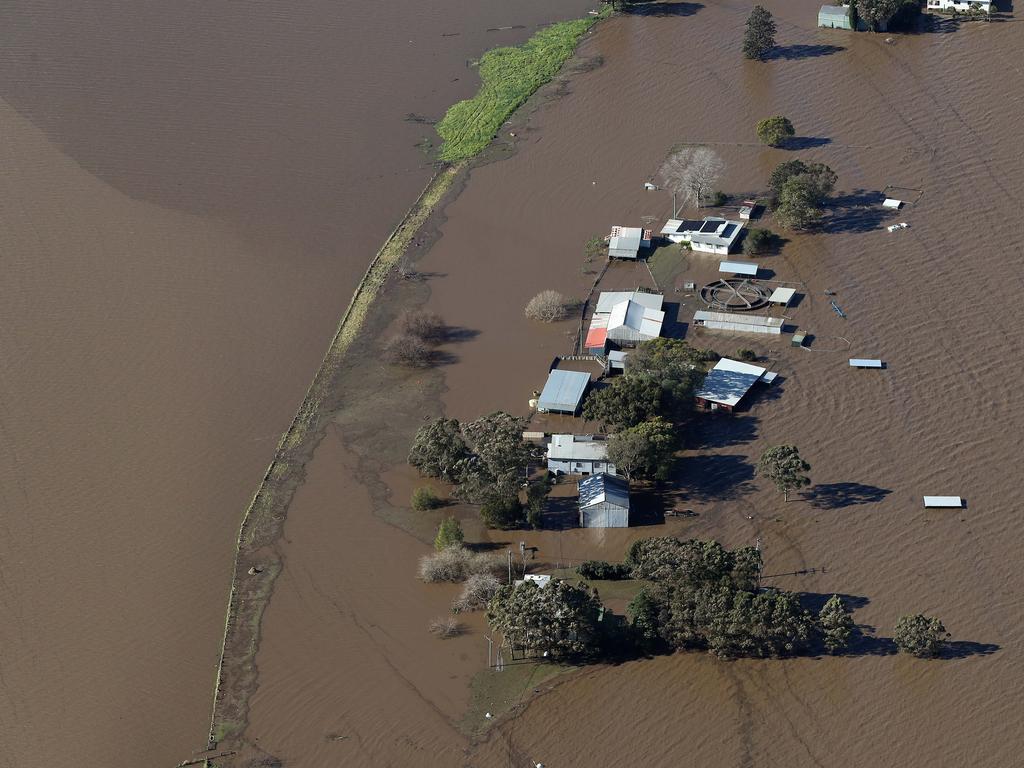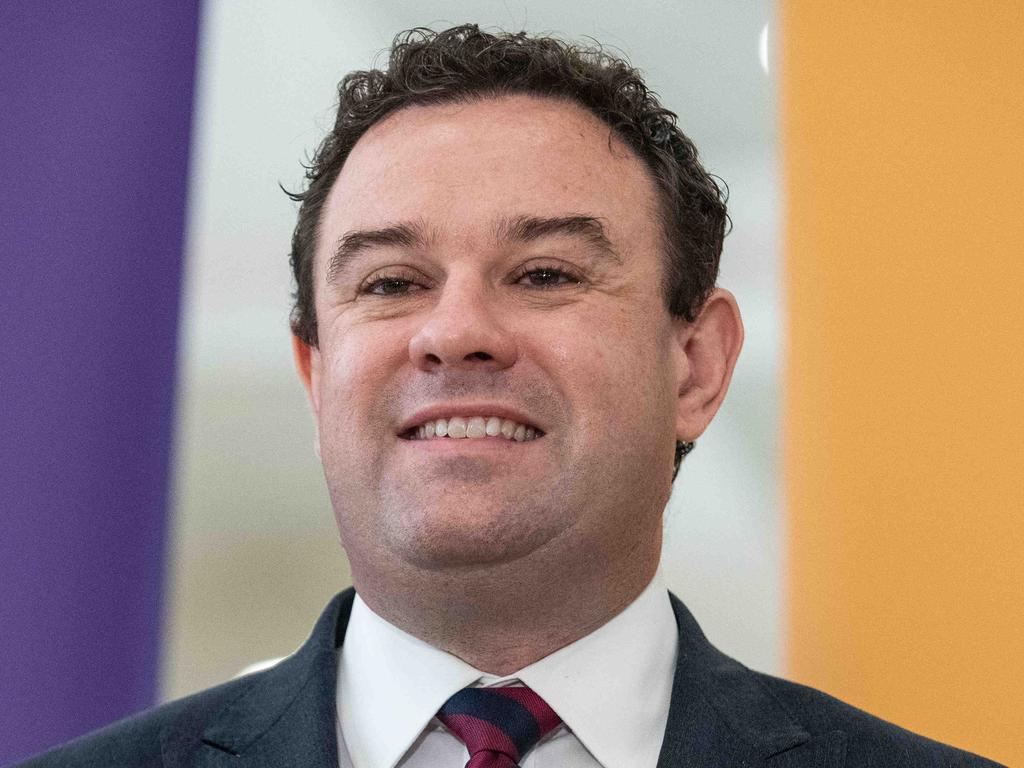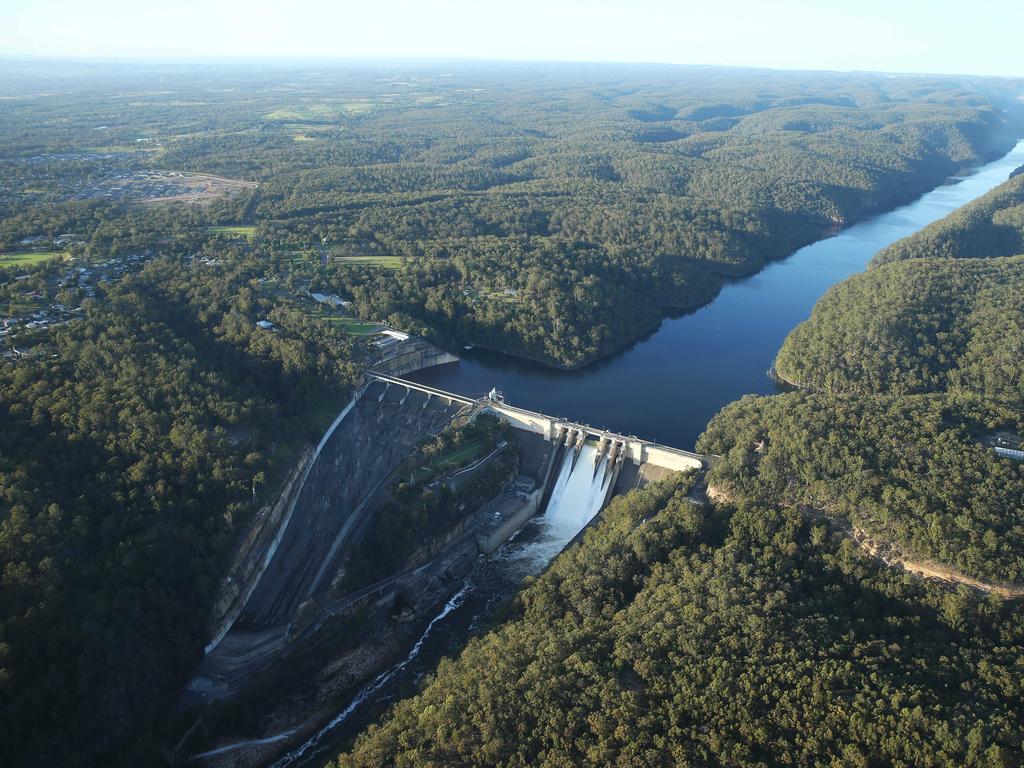Inquiry endorses raising of Warragamba Dam wall
An independent flood inquiry has found that the $2bn extension of Warragamba Dam wall by 14m would have the ‘single largest impact’ on flood mitigation.

An independent inquiry into the catastrophic NSW floods has found that the $2bn extension of Warragamba Dam wall by 14m would have the “single largest impact” on flood mitigation compared with other infrastructure options available.
The five-month inquiry, led by former NSW police commissioner Mick Fuller and Mary O’Kane, said the “single largest driver” of flood risk in the Hawkesbury-Nepean Valley, in Sydney’s west, was development on the flood plain.
“Realisation of potential development on the flood plain is likely significantly to increase flood risk to life, dwellings and infrastructure,” said the report, asserting that stronger planning controls were the “most effective” way to mitigate the threat.
On the threat of future flooding in the region, the report, expected to be handed down imminently, said 55,000 people in the area would be forced to evacuate if a one-in-100-year flood struck today. That figure was tipped to reach 135,000 by 2041.
Of those, more than 23,000 were expected to be unable to flee because of limitations in flood warning forecasting and an inadequate road network.
Under 2041 development projections, raising the dam wall would reduce the number of people unable to evacuate by 88 per cent by delaying dam outflows by almost four days and closing key infrastructure sites, such as the Windsor Bridge.
The dam raising would reduce the flood impact to dwellings by 75 per cent, commercial buildings by 87 per cent, and manufactured homes by 61 per cent.
The limited capacity of roads to provide safe evacuation routes was identified as a “key contributor” to flood risk in the valley and a “key limitation” for future development but the cost of road upgrades was considered “prohibitive” and would not mitigate infrastructure damage.
“Practical options to mitigate large-scale risk to life is effectively limited to restricting and reducing populations in the flood plain, slowing flood peaks by modifying Warragamba Dam and upgrading the road network.”
A plan to raise the Warragamba Dam wall is being considered by Premier Dominic Perrottet. The report concluded the alternative proposal to reduce the dam’s water levels by 5m presented an “unacceptable risk” to Sydney’s drinking water supply.
It said extending the dam wall had the potential to encourage further development in the flood plain, “thereby negating the flood risk benefits”. It also noted concerns about negative impacts on biodiversity and Aboriginal heritage in the World Heritage-listed Blue Mountains National Park.
The $2bn price tag for capital costs is $400m more expensive than previously thought.
The case study, prepared by John Hann, recommended establishing new flood planning levels and relocating the most vulnerable residential communities in circumstances where it represented a “sustainable and safe alternative to exposure to ongoing extreme flood risk”.
It called for future developments planned below the revised FPL to be rezoned under a new flood risk planning instrument.
A key recommendation will be establishing a reconstruction authority responsible for managing and co-ordinating housing and infrastructure renewal in disaster-affected communities.







To join the conversation, please log in. Don't have an account? Register
Join the conversation, you are commenting as Logout